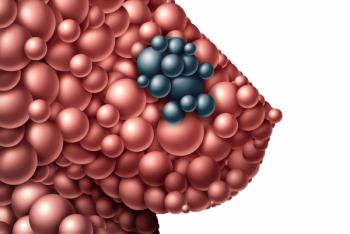
Abstract 8506
A phase III trial comparing R–CHOP14 and R–CHOP21 for the treatment of patients with newly diagnosed diffuse large B–cell non–Hodgkin's lymphoma D. Cunningham, P. Smith, P. Mouncey, et al Methods: Patients were randomized to either 8 cycles of standard R–CHOP21 or 6 cycles of R–CHOP14 (+ G–CSF) with 2 additional cycles of single–agent rituximab (Rituxan). Patients were stratified by age (≤ 60 vs > 60), World Health Organization performance status (0–1 vs 2), and LDH (lactate dehydrogenase) level (normal vs raised). The primary endpoint was overall survival. Among 1,080 patients (median age 61 years), IPI (International Prognostic Index) scores of ≥ 4 were found in 17% of R–CHOP21 patients and in 15% of the R–CHOP14 arm. Stage 3/4 disease was reported in 63%/62% of patients in the R–CHOP21/R–CHOP14 arms, B symptoms in 44%/47%, and bulky disease in 51%/48%, respectively. Results: Reported grade 3/4 toxicities in the R–CHOP21 and R–CHOP14 arms were neutropenia 57%/31%, thrombocytopenia 5%/9%, infection 22%/17%, cardiac symptoms 1%/2%, nausea and vomiting 8%/8%, and mucositis 2%/3%. The radiologic complete response rates (CR/CRu [unconfirmed]) were 63% in the R–CHOP21 arm (49%/14%) and 58% (40%/18%) in the R–CHOP14 arm (P = .183). With a median follow–up of 17 months, there have been 150 deaths (14%). Conclusions: Response rates with 6 x R–CHOP14 (+2xR) are no better than with 8 x R–CHOP21. There are no differences among prognostic subgroups (including IPI). Acute toxicity levels are comparable. Final analysis will be performed when 330 deaths have occurred.
A phase III trial comparing R–CHOP14 and R–CHOP21 for the treatment of patients with newly diagnosed diffuse large B–cell non–Hodgkin's lymphoma
D. Cunningham, P. Smith, P. Mouncey, et al
Methods: Patients were randomized to either 8 cycles of standard R–CHOP21 or 6 cycles of R–CHOP14 (+ G–CSF) with 2 additional cycles of single–agent rituximab (Rituxan). Patients were stratified by age (≤ 60 vs > 60), World Health Organization performance status (0–1 vs 2), and LDH (lactate dehydrogenase) level (normal vs raised). The primary endpoint was overall survival. Among 1,080 patients (median age 61 years), IPI (International Prognostic Index) scores of ≥ 4 were found in 17% of R–CHOP21 patients and in 15% of the R–CHOP14 arm. Stage 3/4 disease was reported in 63%/62% of patients in the R–CHOP21/R–CHOP14 arms, B symptoms in 44%/47%, and bulky disease in 51%/48%, respectively.
Results: Reported grade 3/4 toxicities in the R–CHOP21 and R–CHOP14 arms were neutropenia 57%/31%, thrombocytopenia 5%/9%, infection 22%/17%, cardiac symptoms 1%/2%, nausea and vomiting 8%/8%, and mucositis 2%/3%.
The radiologic complete response rates (CR/CRu [unconfirmed]) were 63% in the R–CHOP21 arm (49%/14%) and 58% (40%/18%) in the R–CHOP14 arm (P = .183). With a median follow–up of 17 months, there have been 150 deaths (14%).
Conclusions: Response rates with 6 x R–CHOP14 (+2xR) are no better than with 8 x R–CHOP21. There are no differences among prognostic subgroups (including IPI). Acute toxicity levels are comparable. Final analysis will be performed when 330 deaths have occurred.
Newsletter
Stay up to date on recent advances in the multidisciplinary approach to cancer.





